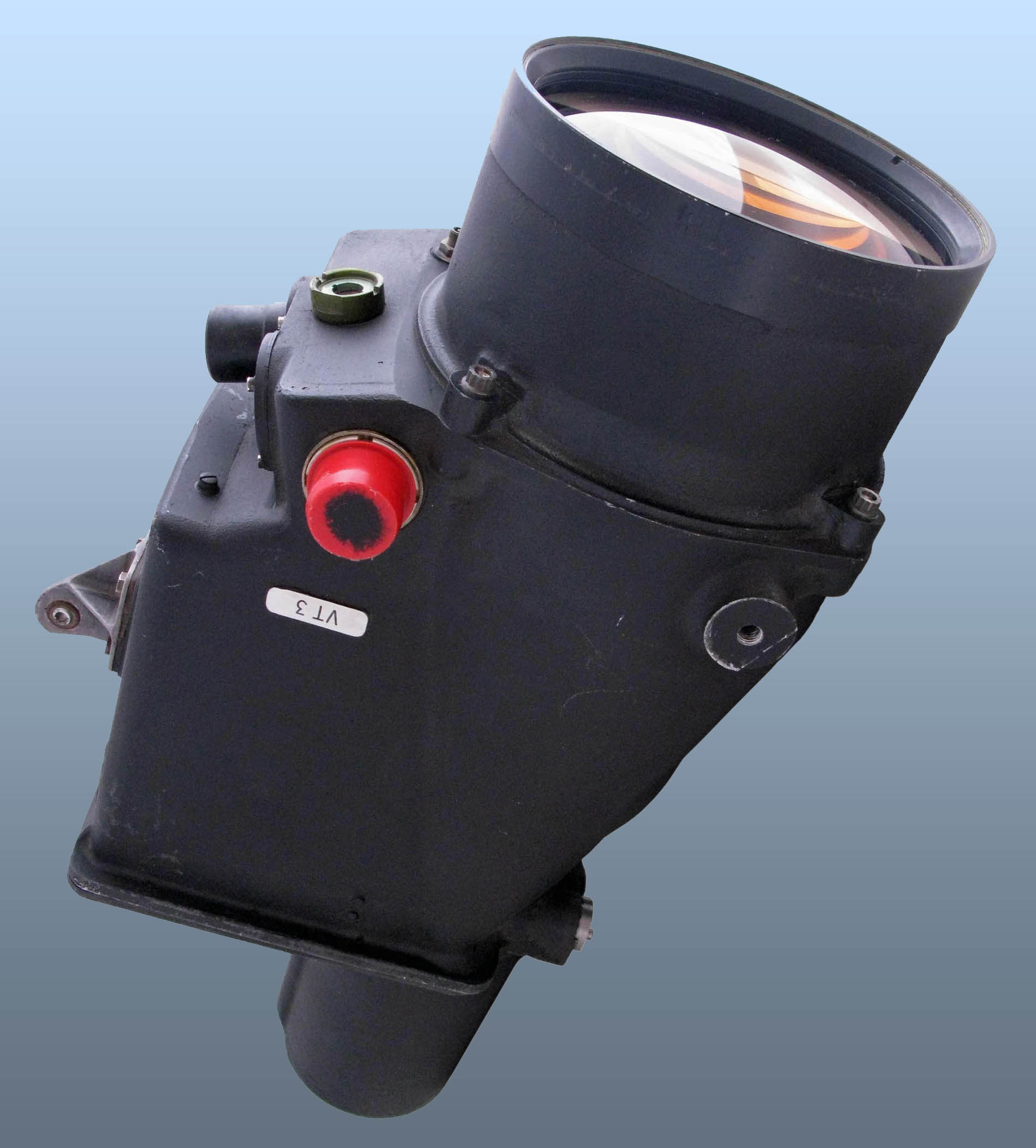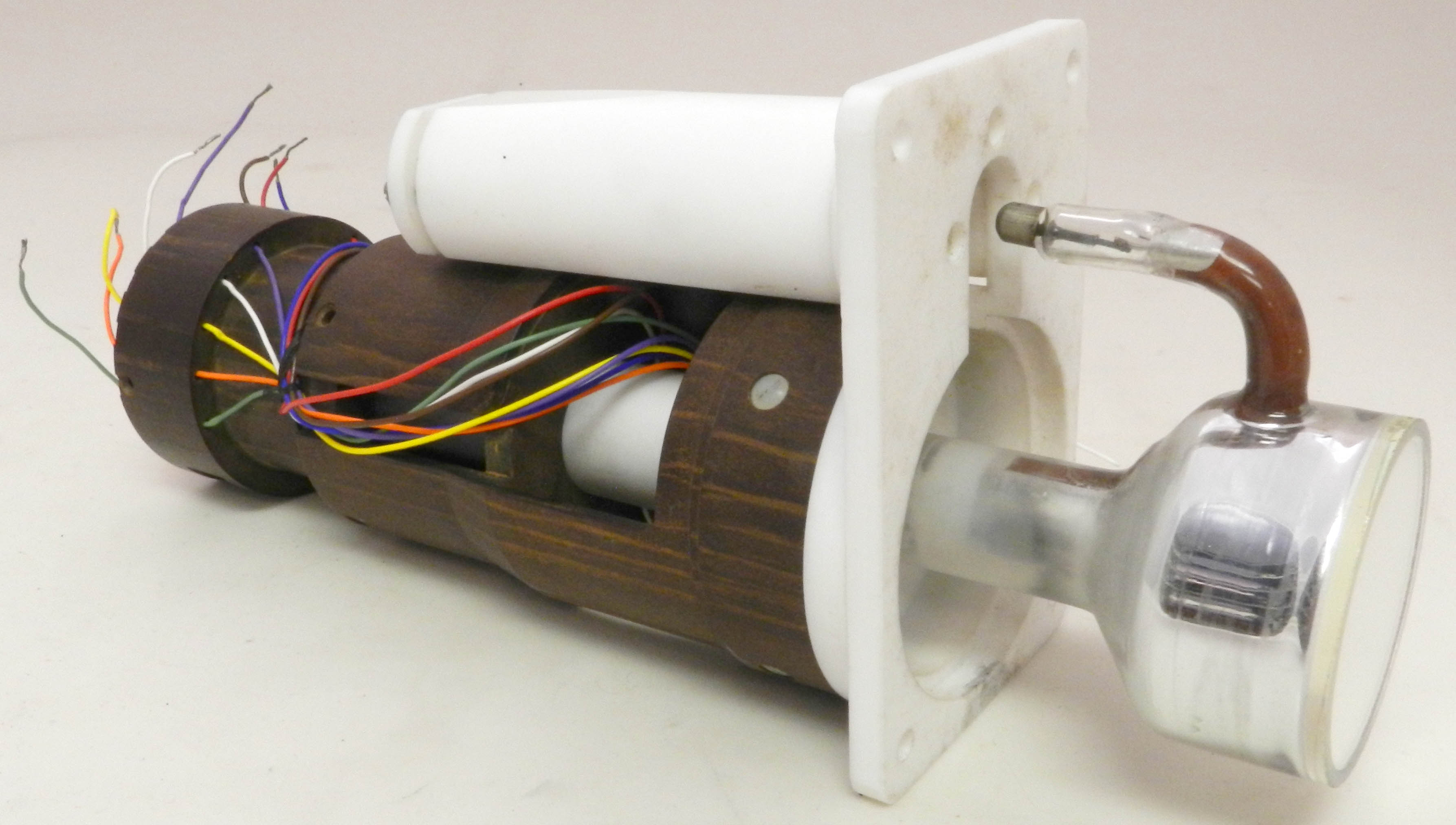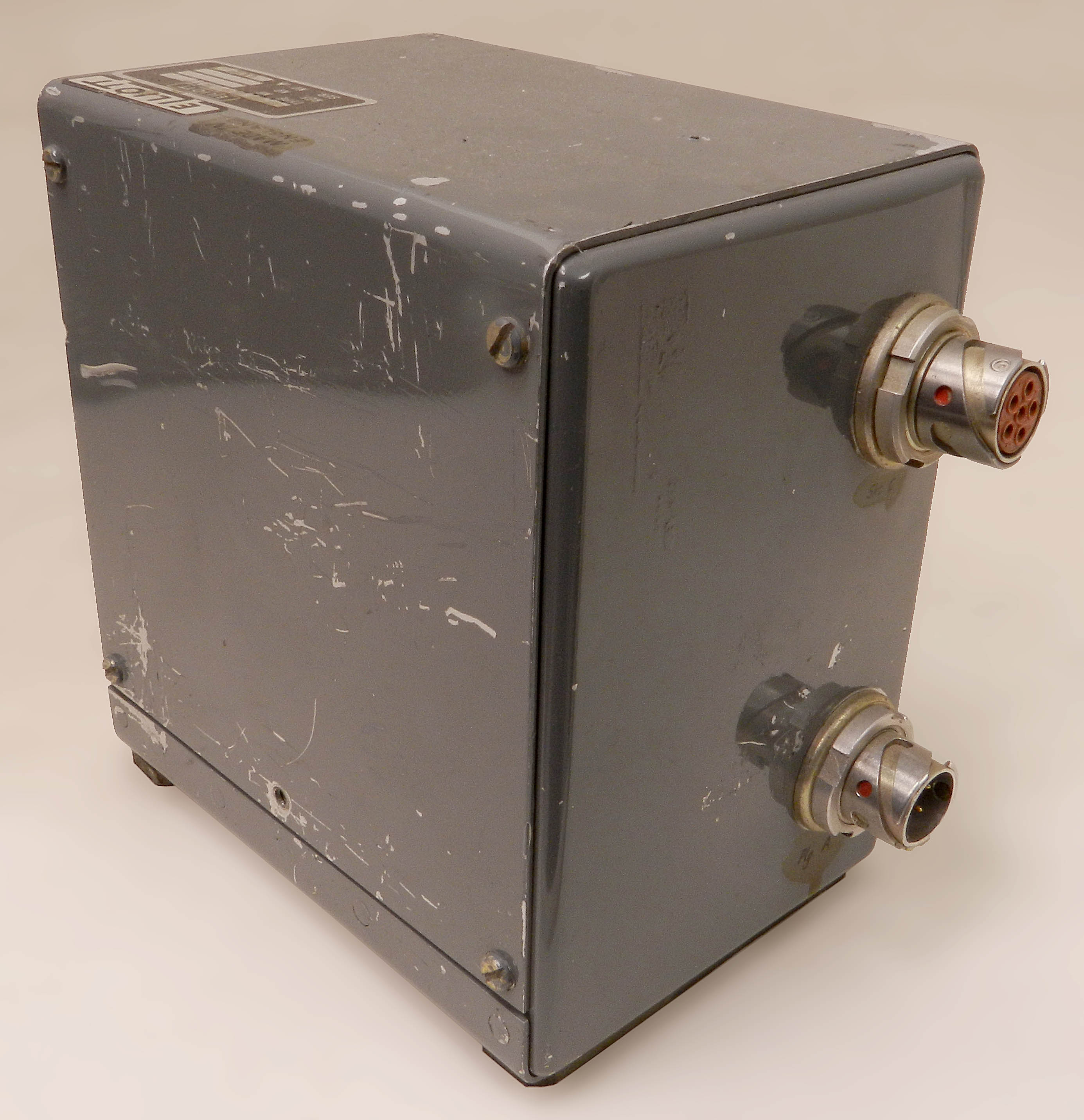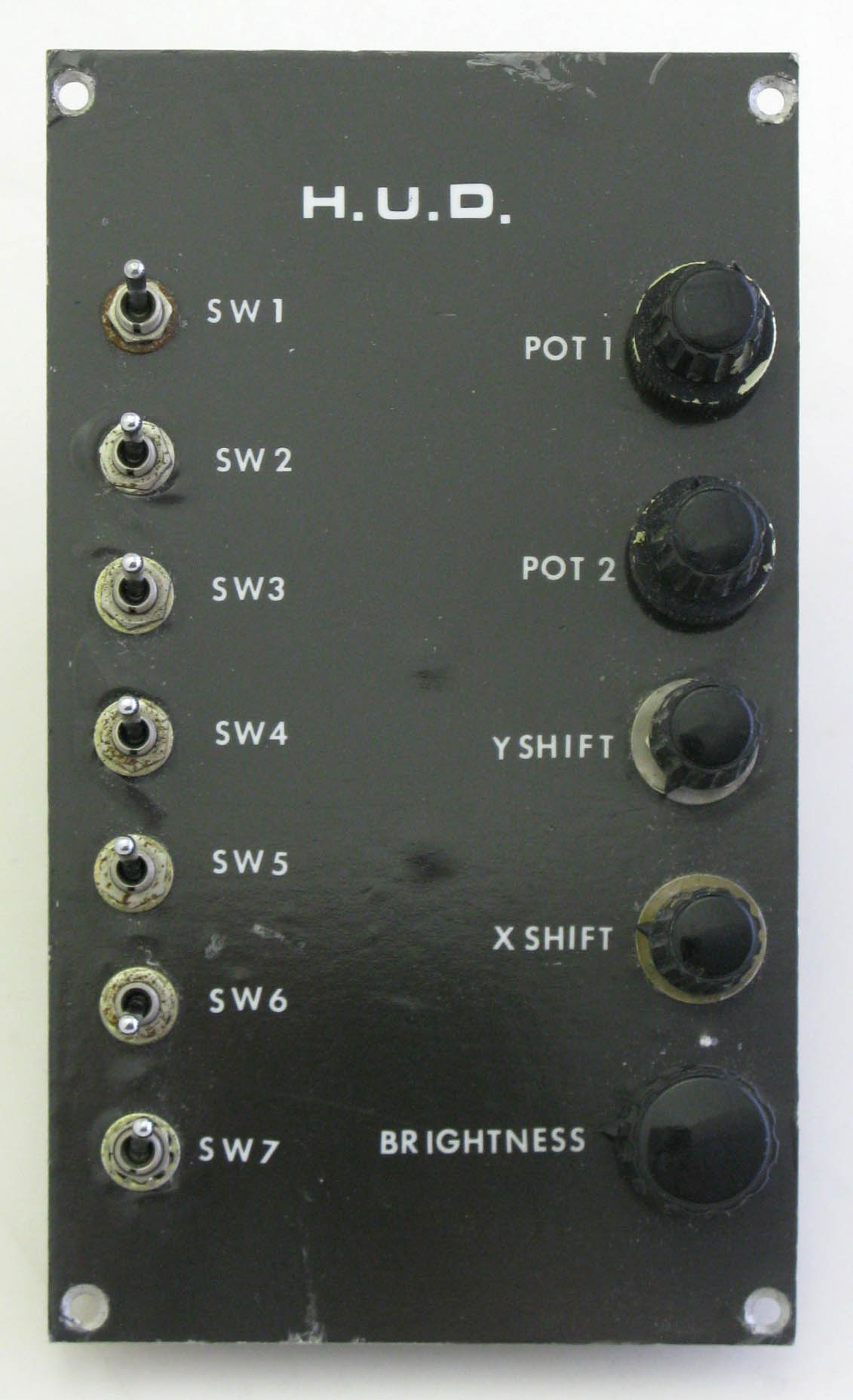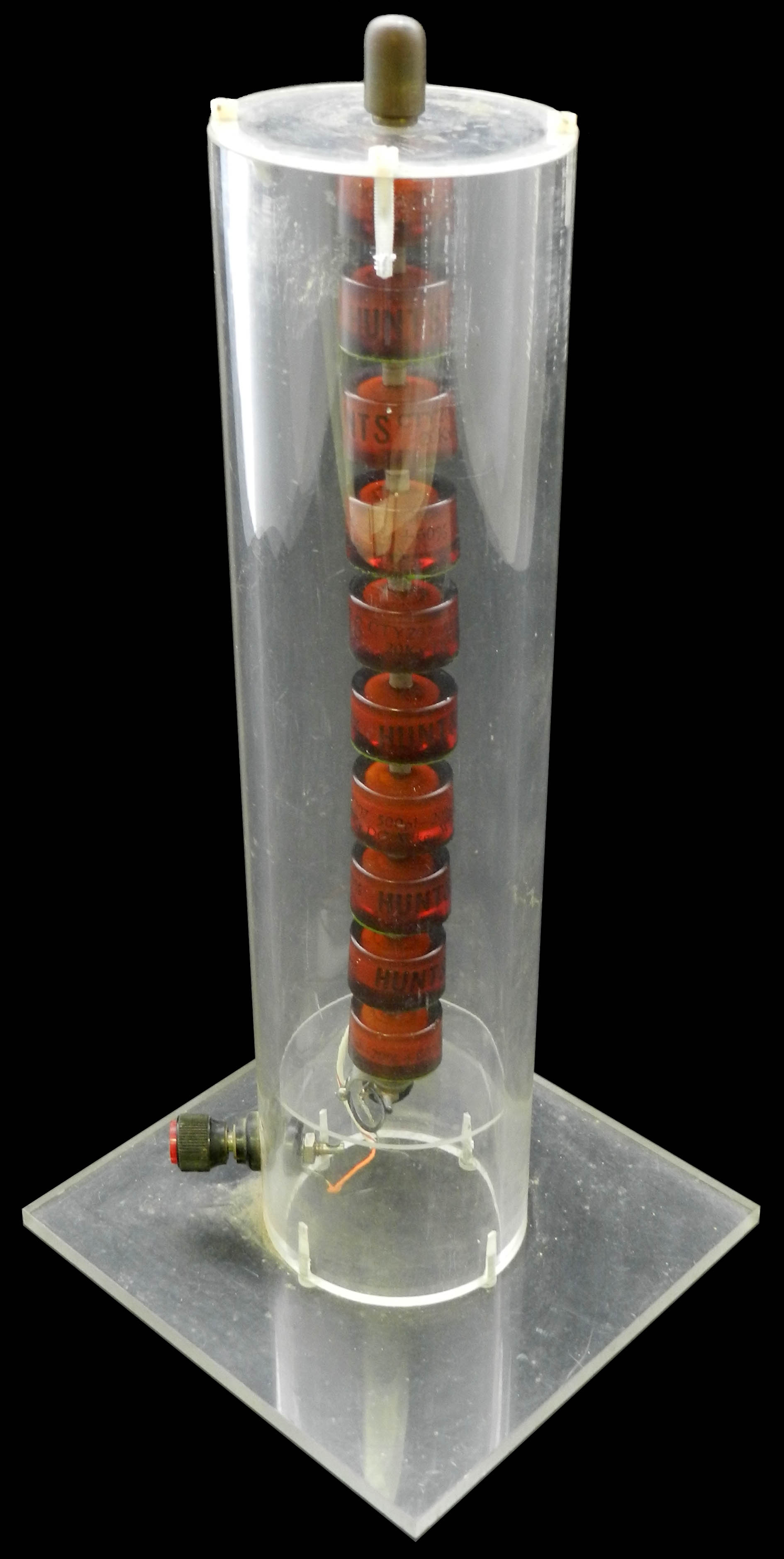In late 1937, Baird founded Cinema-Television Ltd with the object of exploiting projection television for the cinema; Cinema-Television later became known as simply Cintel. At the Sydenham factory the Instrumentation Group manufactured TV tubes up to 15”, Iconoscope camera tubes and projection cathode ray tubes. Cathode Ray Tubes of up to 14inch diameter operating at 60kV were made for cinema projection. With the advent of war in September 1939, the domestic market for television receivers and the large screen cinema systems collapsed and Baird Television Ltd was put into receivership by Gaumont British. The assets were invested into Cinema-Television, a company now also owned and controlled by Gaumont British. An arrangement was made between Gaumont British, Cintel and the receiver of Baird Television Ltd to the effect that Cintel was financed for the purpose of carrying out government contracts. Thus Cintel had a major wartime role making Radar Tubes, photocells and Skiatron dark trace tubes for Radar. By the end of the war Cintel had three factories with a thousand staff most of whom were working on military equipment and acquired valuable skills in electro-optical systems.
In 1941, the controlling interest in Gaumont British was acquired by J.Arthur Rank (later Lord Rank) as part of the extraordinary growth of the Rank Organisation into cinema related technology.
In 1953, the original Baird CRT factory, the Rotunda in the grounds of the Crystal Palace, was finally shut and work transferred to a new factory at Sidcup still under the name of Cintel. The site at Sydenham expanded to three Divisions; Television Division, Vacuum Tube Division and Instrument Division. The Television Division developed and manufactured professional TV equipment, telerecording, telecine, slide scanner monitors and medium/large screen projection systems. The Vacuum Tube Division was responsible for the projection tubes for cinemas, camera tubes and flying spot scanner tubes for the Television Division and later they were the source of the tubes for the Head Up Display. The Instruments Division of course made instruments but in 1951 they began to develop the Head Up Display; this led to a separate Aircraft Equipment Division by the mid-fifties.
In 1958, the Rank Organisation consolidated their ownership by renaming Cintel as Rank Cintel. Their primary expertise was in flying spot telecine which used sophisticated optical systems, high brightness Cathode Ray Tubes and analogue electronics which we have seen are key to the design of a Head Up Display. In the mid 50’s Rank-Cintel Co. undertook to support the Royal Aircraft Establishment (RAE) at Farnborough in work aimed at providing a flight data display for high speed military aircraft.
Elliotts were particularly keen to acquire the aircraft instrument and Head Up Display work at Rank Cintel and in August 1964 Elliotts under the leadership of Jack Pateman acquired the Head Up Display business of the Instrument Division (Aircraft Equipment Division) of Rank Cintel.
In 1964 Rank Cintel’s Television Division transferred to Rank Bush Murphy at Welwyn Garden City and the rest of the Instrument Division was absorbed into Rank Pullin Controls. The Electronic Tubes Division was incorporated into Rank Audio Visual a group within Rank Precision Industries and all CRT business was consolidated at Sidcup in 1965 as Rank Electronic Tubes Co. Ltd (RET). Rank Cintel continued with the production of telecine equipment with which it is still associated.

